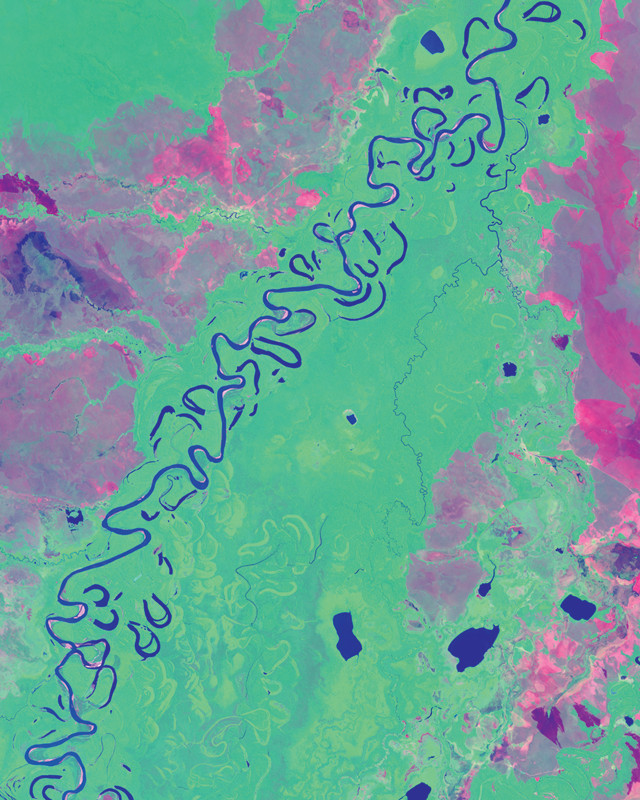
by Timothy Oleson Tuesday, June 16, 2015

Meanders of the Rio Beni in Bolivia. Credit: Landsat/U.S. Geological Survey.
The amount of sediment carried in meandering rivers influences how quickly the bends in those rivers migrate back and forth, according to recent research in Nature Geoscience addressing a longstanding question regarding river evolution. Meanders form when flowing water erodes one riverbank while simultaneously depositing sediment on the opposite bank, gradually creating more and more pronounced U-shaped bends. Sometimes, the rivers cut new channels across the narrow necks of such bends, isolating the abandoned meanders to form distinctive oxbow lakes.
Using Landsat images collected between 1985 and 2013, José Constantine of Cardiff University in Wales and colleagues studied 20 stretches of various Amazon tributaries with variable sediment loads. They found, on average, that meanders migrated more quickly — and were more often cut off to form oxbow lakes — in rivers carrying higher annual sediment loads, such as Bolivia’s winding Rio Beni (at right in image). No such correlations existed in their data between bend migration and either river slope or discharge. The results demonstrate how sediment loading shapes the landscape in parts of the Amazon floodplain, the researchers noted, and indicate potential impacts of proposed dam and reservoir projects along these rivers, which could decrease downstream sediment loads.
© 2008-2021. All rights reserved. Any copying, redistribution or retransmission of any of the contents of this service without the expressed written permission of the American Geosciences Institute is expressly prohibited. Click here for all copyright requests.